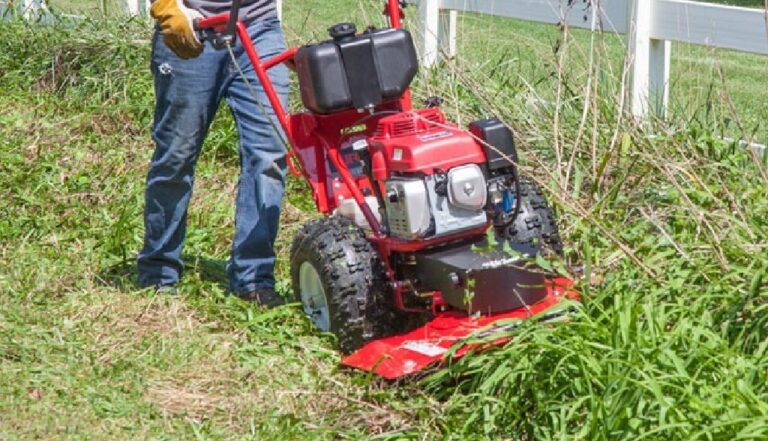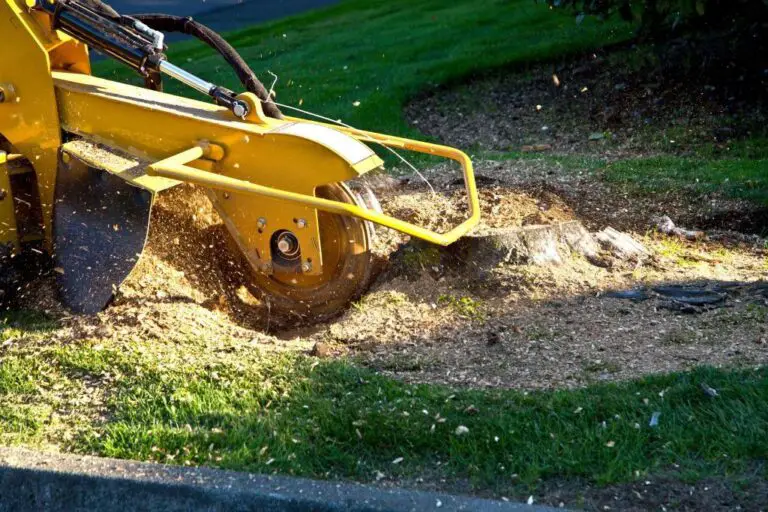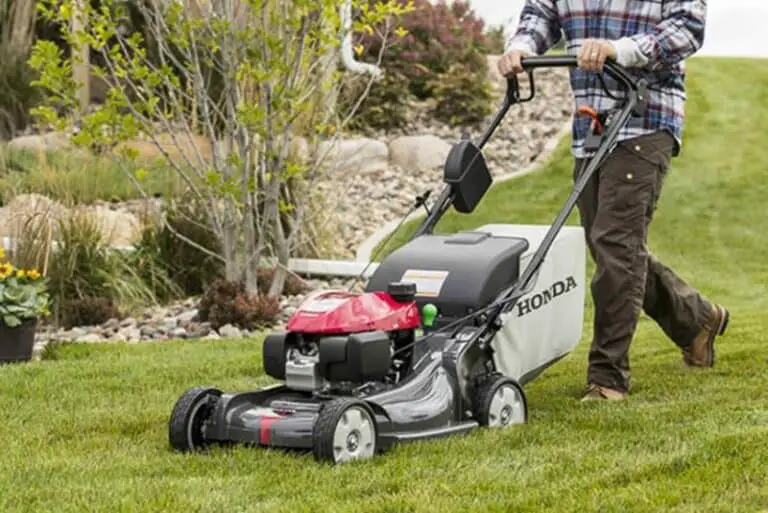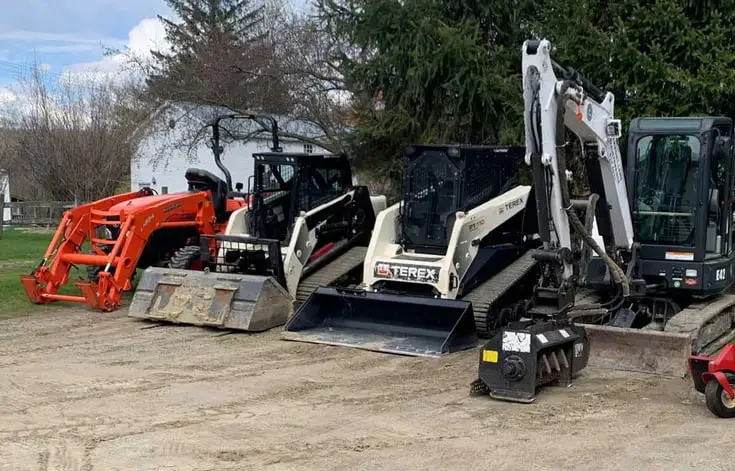The Advantages of Using Brush Cutters in Forestry Management
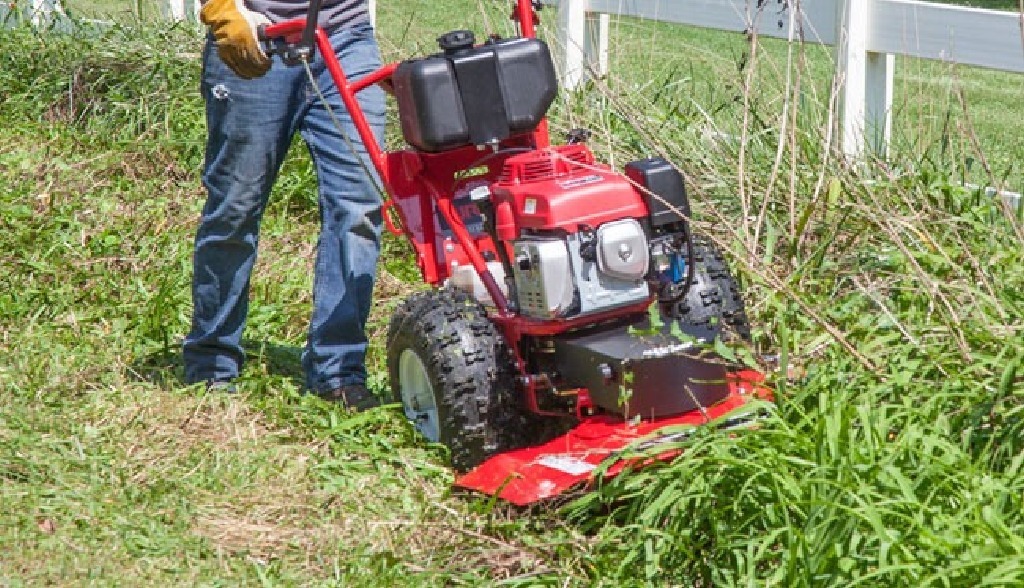
When it comes to managing forests, there are a lot of tools at your disposal. One that’s growing in popularity is the brush cutter. These powerful machines can help you clear out underbrush, cut down small trees, and keep your property looking tidy. But the advantages of using a brush cutter go beyond just aesthetics. There are plenty of practical benefits to using these tools as well.
In this article, we’ll explore the advantages of using brush cutters in forestry management. We’ll cover everything from the cost-effectiveness of using brush cutters to the environmental benefits they provide.
Whether you’re a seasoned forestry manager or just starting out, this article will help you understand why brush cutters are such a valuable tool in your arsenal.
So if you’re considering using a brush cutter for your next project, keep reading to find out why it’s a great choice!
Introduction to Forestry Management and Brush Cutters
When it comes to forestry management, there are a number of tools and techniques that can be used to achieve the desired outcomes. The brush cutter is one of the best ways to clear land and keep the environment in balance.
These machines are made to quickly and effectively get rid of bushes and small trees that are in the way, making it easier to use land for different things. In this section, we’ll take a closer look at how brush cutters can improve forestry management practices.
First and foremost, brush cutters are incredibly efficient at clearing land. These machines are designed to cut through brush and small trees quickly, making it possible to clear large areas in a relatively short amount of time. This saves time and money and also lowers the risk of fires and other dangers that come with overgrown plants.
Another major advantage of using brush cutters in forestry management is safety. Clearing land by hand can be incredibly dangerous, especially when dealing with sharp tools and heavy machinery.
By using brush cutters, workers can stay at a safe distance from the cutting action while still achieving the desired results. This not only reduces the risk of accidents and injuries but also makes it possible to clear areas that would be too dangerous to manage otherwise.
Finally, brush cutters can help preserve ecological balance in forests and other natural areas. Brush cutters make it possible to keep a healthy mix of plants in an area by removing only the plants that aren’t needed. This can be very important for keeping wildlife habitats safe and making sure that forests continue to provide a wide range of ecosystem services over time.
With these benefits in mind, it’s clear that brush cutters are an important tool for forestry management that can help achieve a range of important goals.
Advantages of Using Brush Cutters in Forestry Management

When it comes to forestry management, there are a variety of tools and techniques available for land managers to consider. One of these tools is the brush cutter, a powerful machine that can clear brush and small trees quickly and efficiently. Even though there are other ways to take care of forests, many land managers choose to use brush cutters because they have a number of clear advantages.
1. Improved Efficiency in Land Clearing
Brush cutters are very good at clearing land of unwanted plants, which makes them a useful tool for managing forests. Compared to traditional methods of land clearing, such as using chainsaws or hand tools, brush cutters are much faster and more efficient. With the ability to clear large areas of land in a short amount of time, brush cutters can help forestry managers achieve their goals quickly and effectively.
2. Enhanced Safety for Workers
Brush cutters are made with safety in mind, and using them in forestry management can greatly reduce the chance of accidents and injuries. Workers can use brush cutters safely far away from the cutting action. This lowers the risk of cuts, punctures, and other injuries that can happen when using traditional land clearing tools.
A lot of brush cutters also come with safety features like protective shields and anti-vibration technology, which make workers even safer.
3. Reduction in Manual Labor
Using brush cutters to manage forests can reduce the amount of labor required to clear land by hand. Clearing land by hand can take a long time and be hard on your body. Using a brush cutter can save forestry managers time and money.
With the ability to clear large areas of land quickly and efficiently, brush cutters can help reduce the need for manual labor and make forestry management more efficient overall.
4. Preserves Ecological Balance
One of the best things about using brush cutters in forest management is that they can be used to clear vegetation in a selective way that doesn’t hurt the environment. Brush cutters can be used to keep the land’s ecological balance, unlike bulldozers and other heavy machinery that can do a lot of damage to the environment.
By removing only the unwanted plants, brush cutters can help keep a healthy mix of plants in the area and protect wildlife habitats.
5. Reduction in Herbicides and Pesticides
Using herbicides and pesticides can be harmful to the environment, and can also be expensive for forest managers. Forestry managers can cut down on the use of these chemicals by getting rid of unwanted plants with brush cutters.
Brush cutters can be used to clear away only certain types of plants without using harmful chemicals. This makes them an eco-friendly and cost-effective way to manage forests.
6. Increased Accessibility and Maneuverability
Brush cutters are designed to be highly maneuverable, which makes them ideal for clearing land in hard-to-reach areas. With the ability to cut through thick vegetation quickly and easily, brush cutters can be used to clear land in tight spaces and other areas that are difficult to access with traditional land clearing equipment.
7. Improved Aesthetic Appeal and Land Value
Lastly, using brush cutters in forest management can make the area look better and increase the land’s value. Forestry managers can make the land more attractive and desirable by removing unwanted plants. This can increase the value of the land.
A well-kept forest or natural area can also be a valuable asset for conservation and recreation, which can make the land even more valuable.
Comparison of the Benefits of Brush Cutters vs Other Forestry Management Equipment
When it comes to forestry management, there are a variety of tools and equipment available that can be used to achieve the desired outcomes. However, not all tools are created equal, and each has its own advantages and disadvantages. In this section, we’ll compare the benefits of brush cutters with those of other common forestry management equipment.
One of the most common alternatives to brush cutters is chainsaws. While chainsaws are great for cutting down larger trees, they are not ideal for clearing brush and smaller vegetation. In fact, using chainsaws for this purpose can be dangerous and inefficient.
Brush cutters, on the other hand, are specifically designed for cutting through brush and small trees quickly and safely. This makes them a more efficient and effective choice for many forestry management applications.
Another common tool used in forestry management is the bulldozer. While bulldozers can be effective at clearing large areas of land quickly, they can also be damaging to the environment.
Bulldozers can cause soil compaction, erosion, and other environmental problems that can have long-lasting effects on the ecosystem. Brush cutters, on the other hand, are less likely to cause environmental damage. They can be used to clear only the plants that are needed, leaving the rest of the ecosystem alone.
Finally, herbicides are another common tool used in forestry management. Herbicides can be useful for getting rid of unwanted plants, but they can also hurt the environment and wildlife. Herbicides can contaminate soil and water, killing beneficial plants and animals in the process.
Brush cutters, on the other hand, can be used without the need for harmful chemicals. This makes them a more eco-friendly choice for many forestry management applications.
| Benefits | Brush Cutters | Chainsaws | Bulldozers |
| Efficiency in land clearing | High | Moderate | High |
| Safety for workers | High | Moderate | Low |
| Reduction in manual labor | High | Low | Low |
| Preserves ecological balance | High | Low | Low |
| Reduction in herbicides | High | Low | Low |
| Accessibility and maneuvering | High | Low | Moderate |
| Aesthetic appeal and land value | High | Low | Low |
The Cost-effectiveness of Using Brush Cutters in Forestry Management
When it comes to managing a forest, one of the most important considerations is cost. After all, managing forests can be expensive, so people in charge of the land need to make sure they are getting the most out of what they have.
One tool that can be particularly cost-effective in forestry management is the brush cutter. In fact, there are several reasons why using brush cutters can be a cost-effective choice for land managers.
- Brush cutters can be incredibly efficient, which can translate into significant cost savings. Because brush cutters can clear large areas quickly and with minimal effort, they can help reduce labor costs associated with manual brush clearing.
- Additionally, brush cutters can be used to clear paths and trails, maintain roadsides, and even clear land for new construction or development, all of which can help to save time and money in the long run.
- Since brush cutters are often designed to be fuel-efficient and environmentally friendly, they can also help to reduce fuel costs and minimize the impact on the environment.
- Another reason why brush cutters can be cost-effective is their versatility. Unlike other tools that may only be useful for specific tasks, brush cutters can be used for a wide range of forestry management activities. For example, they can be used to clear brush, small trees, and other vegetation quickly, making them a valuable tool in wildfire prevention.
- They can also be used to selectively clear certain areas while leaving other areas untouched, which can help to preserve habitats and promote biodiversity. This flexibility means that land managers can invest in a single tool that can be used for a wide range of tasks, rather than needing to purchase multiple specialized tools.
- Finally, brush cutters can be a cost-effective choice because they can help to reduce long-term costs associated with forest management. By clearing brush and small trees, brush cutters can help to reduce the risk of wildfire and make it easier for emergency responders to access affected areas. Additionally, by maintaining roadsides and trails, brush cutters can make these areas safer and more accessible for hikers, bikers, and other recreational users.
By investing in forest management tools like brush cutters, land managers can help to reduce the risk of costly damage and improve the long-term value of their forested areas.
Real-life Examples of Successful Forestry Management Projects With Brush Cutters
One real-life example of successful forestry management using brush cutters is the “Green Waves” project in China. This project involved clearing large swaths of bamboo forests to make way for agriculture and other land uses.
The use of brush cutters allowed workers to clear the land quickly and efficiently, while minimizing the environmental impact of the project. By selectively clearing unwanted vegetation, brush cutters were able to preserve the ecological balance of the area, and reduce the need for herbicides and other harmful chemicals.
Another example of successful forestry management using brush cutters is the “Forestry for the Bay” project in the United States. This project was meant to fix up the damage that years of building and farming had done to wetlands and other natural areas along the Chesapeake Bay.
With the help of brush cutters, invasive plant species were removed from the area. This made room for native plant species to grow and helped restore the ecological balance of the wetlands. The use of brush cutters also made it possible for workers to work in places where traditional forestry management equipment would have been less effective, such as in marshy areas.
Finally, brush cutters have also been used successfully in wildfire management. In California, for example, brush cutters have been used to create firebreaks and clear vegetation around homes and other structures to prevent wildfires from spreading.
Brush cutters have helped keep homes and other buildings safe from the damage caused by wildfires by quickly clearing out large areas of vegetation. This is an important part of managing the state’s wildfire risk.
Tips for Choosing the Right Brush Cutter for Your Forestry Management Needs
If you’re in the market for a brush cutter for your forestry management needs, there are several factors to consider to ensure that you choose the right one for the job. With so many options available, it can be overwhelming to decide which brush cutter will best meet your needs.
However, by considering a few key factors, you can choose a brush cutter that will make your forestry management tasks easier and more efficient.
- Consider the Type of Vegetation to be Cleared: Brush cutters come in different sizes and strengths, so it is important to choose one that is appropriate for the type of vegetation you will be cutting. If you are dealing with thicker and denser vegetation, a more powerful brush cutter may be necessary.
- Evaluate the Terrain: The terrain you will be working on also plays a significant role in determining the right brush cutter for your needs. If you will be working on rough terrain with steep slopes, a lightweight and maneuverable brush cutter will be more suitable.
- Determine the Size of the Project: The size of the project also matters when choosing a brush cutter. If you are working on a large-scale project, a more powerful and efficient brush cutter will be necessary to save time and labor costs.
- Look for Versatility: Some brush cutters come with interchangeable attachments, such as saw blades or hedge trimmers, which can increase their versatility and make them more useful in a variety of forestry management projects.
- Consider Maintenance Needs: Proper maintenance is key to keeping your brush cutter in good working condition, so consider the maintenance needs of different models before making a purchase. Some brush cutters may require more frequent and expensive maintenance than others.
- Check the Fuel Efficiency: Fuel efficiency is another important factor to consider when choosing a brush cutter. A fuel-efficient model can help you save money on fuel costs over time and reduce your environmental impact.
- Read Reviews and Get Recommendations: Before making a final decision, read reviews from other forestry management professionals and seek recommendations from colleagues in the industry. This can help you make an informed decision and avoid potential problems with your brush cutter down the line.
Conclusion and Final Thoughts on the Advantages of Using Brush Cutters in Forestry Management
In the end, there are many and wide-ranging benefits to using brush cutters in forest management. Brush cutters offer improved efficiency in land clearing, enhanced safety for workers, reduced manual labor, and the preservation of ecological balance, to name a few benefits. By using brush cutters in forestry management, it is possible to achieve desired outcomes with minimal environmental impact.
Also, brush cutters are versatile and can be used for a wide range of tasks, such as clearing large areas of land, putting out wildfires, and restoring wetlands and other natural habitats.
Because they are easy to use and move around, brush cutters are great for rough terrain and tight spaces where traditional forestry management equipment might not work.
Even though buying and maintaining a brush cutter may require an initial investment, the benefits it provides make it a good investment for forestry management. By cutting down on the need for herbicides and pesticides, brush cutters can also help lower the costs of managing forests. Well-kept forests can also help landowners and communities in the long run by making the area look better and increasing the value of the land.

